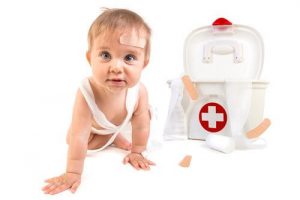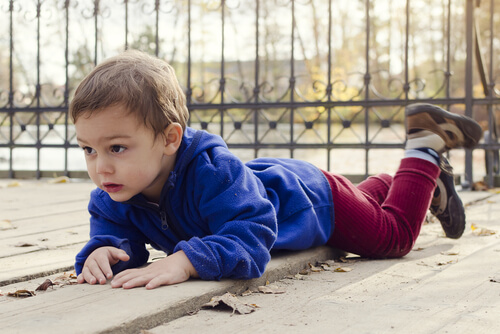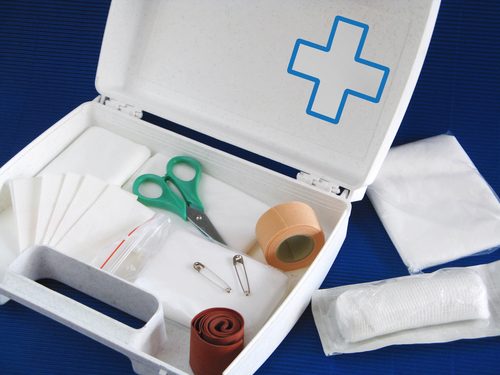Why You Need to Have a First Aid Kit at Home

There are many reasons why it’s so important to have a first aid kit at home. Here are just two of them:
- The first, and most common, is for children. Kids always play and have fun without thinking about the risk of hurting themselves. They often get hurt and we have to help them quickly.
- The second reason that many people forget about is natural disasters. Lately, we’ve been hearing a lot about hurricanes and earthquakes, for example. We tend not to think they could ever happen to us.
If you don’t think either of those reasons pertain to you, should you still have a first aid kit at home? You definitely should. Accidents and disasters do happen, and most often without warning. So you need to be prepared.
So, get ready! In this article, we’ll show you what you need to have in a first aid kit at home.
What Is a First Aid Kit?
A first aid kit is a box where you keep the necessary items to help someone in case of an emergency.
You mainly need it to store medical supplies that provide first aid and medicines for common problems. However, disaster management organizations suggest that families add a few extra things. We’ll explain that later!

What Is a First Aid Kit For?
A first aid kit is used to carry essential supplies that you would need in case of an emergency. Therefore, you should keep in mind the following tips:
- Make it easy to handle and light.
- Store only what is completely necessary for first aid.
- If you’re adding non-medical supplies, make sure they’re completely necessary.
- It shouldn’t be hard to find. Everyone in the family should know where it is.
- It’s best to keep it out of children’s reach. However, they should know it exists.
- Review your kit once a year. Check for expired medications and broken items. This way, you can replace everything in case you need them.
Benefits of Having a First Aid Kit at Home
Having a first aid kit at home will be so helpful. With it, you can:
- Handle minor injuries.
- Deal with more serious problems, such as vomiting, diarrhea, pain, deep wounds, etc.
- Treat certain serious injuries. In this case, you may need to add some more uncommon items. Some of these include saline solution, an IV kit, and even some advanced materials, in addition to the basics.
These only apply if you’re focusing on handling accidents. To prepare for a disaster, consider adding canned goods, flashlights, drinking water, and other items we’ll describe below.
How to Make a First Aid Kit at Home
There isn’t a specific rule to making one of these kits. However, it mainly depends on your needs and circumstances. It’s a good idea to find out if there have ever been any natural disasters in your area. If there has, each member of your home should prepare an emergency kit. This is in addition to the family first aid kit.
The Basic First Aid Kit Should Contain:
- Alcohol or hydrogen peroxide.
- Gauze strips.
- Bandaids.
- Thermometer.
- Scissors and tweezers.
- Headache medicine.
- Medications for fever, vomiting, diarrhea, etc.
- Disposable latex gloves.

Individual First Aid Kits Should Have:
- Everything we mentioned above. They should be stored in a waterproof container
- Drinking water.
- Non-perishable foods, can openers, and a set of place mats.
- A blanket and extra set of clothes.
- Toiletry items (toothbrush, soap, toilet paper, and towel).
- Flashlight and extra batteries.
- Matches or a lighter.
- Copies of identification documents and phone numbers of emergency services.
- Cash (if necessary) and a map of the area.
We hope all of this information helps you! Remember, it’s better to have your kit ready and not need it than be surprised by a disaster and not be prepared.
There are many reasons why it’s so important to have a first aid kit at home. Here are just two of them:
- The first, and most common, is for children. Kids always play and have fun without thinking about the risk of hurting themselves. They often get hurt and we have to help them quickly.
- The second reason that many people forget about is natural disasters. Lately, we’ve been hearing a lot about hurricanes and earthquakes, for example. We tend not to think they could ever happen to us.
If you don’t think either of those reasons pertain to you, should you still have a first aid kit at home? You definitely should. Accidents and disasters do happen, and most often without warning. So you need to be prepared.
So, get ready! In this article, we’ll show you what you need to have in a first aid kit at home.
What Is a First Aid Kit?
A first aid kit is a box where you keep the necessary items to help someone in case of an emergency.
You mainly need it to store medical supplies that provide first aid and medicines for common problems. However, disaster management organizations suggest that families add a few extra things. We’ll explain that later!

What Is a First Aid Kit For?
A first aid kit is used to carry essential supplies that you would need in case of an emergency. Therefore, you should keep in mind the following tips:
- Make it easy to handle and light.
- Store only what is completely necessary for first aid.
- If you’re adding non-medical supplies, make sure they’re completely necessary.
- It shouldn’t be hard to find. Everyone in the family should know where it is.
- It’s best to keep it out of children’s reach. However, they should know it exists.
- Review your kit once a year. Check for expired medications and broken items. This way, you can replace everything in case you need them.
Benefits of Having a First Aid Kit at Home
Having a first aid kit at home will be so helpful. With it, you can:
- Handle minor injuries.
- Deal with more serious problems, such as vomiting, diarrhea, pain, deep wounds, etc.
- Treat certain serious injuries. In this case, you may need to add some more uncommon items. Some of these include saline solution, an IV kit, and even some advanced materials, in addition to the basics.
These only apply if you’re focusing on handling accidents. To prepare for a disaster, consider adding canned goods, flashlights, drinking water, and other items we’ll describe below.
How to Make a First Aid Kit at Home
There isn’t a specific rule to making one of these kits. However, it mainly depends on your needs and circumstances. It’s a good idea to find out if there have ever been any natural disasters in your area. If there has, each member of your home should prepare an emergency kit. This is in addition to the family first aid kit.
The Basic First Aid Kit Should Contain:
- Alcohol or hydrogen peroxide.
- Gauze strips.
- Bandaids.
- Thermometer.
- Scissors and tweezers.
- Headache medicine.
- Medications for fever, vomiting, diarrhea, etc.
- Disposable latex gloves.

Individual First Aid Kits Should Have:
- Everything we mentioned above. They should be stored in a waterproof container
- Drinking water.
- Non-perishable foods, can openers, and a set of place mats.
- A blanket and extra set of clothes.
- Toiletry items (toothbrush, soap, toilet paper, and towel).
- Flashlight and extra batteries.
- Matches or a lighter.
- Copies of identification documents and phone numbers of emergency services.
- Cash (if necessary) and a map of the area.
We hope all of this information helps you! Remember, it’s better to have your kit ready and not need it than be surprised by a disaster and not be prepared.
All cited sources were thoroughly reviewed by our team to ensure their quality, reliability, currency, and validity. The bibliography of this article was considered reliable and of academic or scientific accuracy.
- Federación Internacional de Sociedades de la Cruz Roja y de la Media Luna Roja. Primeros auxilios. Ciencias Naturales. 2020.
- Alba Martín R. Educación para la salud en primeros auxilios dirigida al personal docente del ámbito escolar. Enferm. univ. 2015 Jun;12 (2): 88-92.
- Solà M, Garrido E, Úbeda I, Morin V, Sancho R, et al. ANALYSIS OF HOUSEHOLD MEDICINE CHESTS: A SIGNIFICANT LEARNING EXPERIENCE FOR NURSING STUDENTS. Enfermagem. 2016;25(1).
This text is provided for informational purposes only and does not replace consultation with a professional. If in doubt, consult your specialist.








